Imagine you’re standing at the edge of the Ural Mountains, where the enchanting tale of “The Stone Flower” unfolds. This story, rich in cultural heritage, presents Danila Master, a stone carver whose ambition leads him into the mystical domain of the Mistress of the Copper Mountain. You’re about to set off on a journey filled with artistic struggle and magical encounters, where every twist raises questions about the balance between human desire and nature’s untamed spirit. What will Danila discover in his quest for perfection, and how will it impact his life and artistry?
Origins of The Stone Flower

Amid the rich tapestry of Russian folklore, the legend of The Stone Flower stands out with its unique origins.
To understand this tale, you need to immerse yourself in the historical context of the Ural Mountains, where the story is set. This region, known for its mineral wealth, inspired many folk traditions that celebrate both the beauty and hardship of mining life.
You’ll find that The Stone Flower draws heavily from these local customs and beliefs. Passed down through generations, the story reflects the daily struggles and aspirations of the people who lived and worked in the Ural Mountains.
These miners and craftsmen revered the natural world, seeing it as both a provider and a force to be respected.
In this context, The Stone Flower isn’t just a tale about a magical blossom; it’s a narrative that encapsulates the cultural and social values of its time.
By weaving together elements of nature, hard work, and mystical occurrences, the legend offers a window into the soul of Russian folk traditions.
As you explore this story, you’ll gain a deeper appreciation for the rich historical backdrop that shaped its creation.
Main Characters

The heart of The Stone Flower lies in its enchanting characters, each embodying distinct aspects of the rich Ural folklore. At the center of the story is Danila Master, a young and exceptionally talented stone carver. His dedication to his craft and relentless pursuit of perfection make him a fascinating figure. Danila’s quest to create the perfect stone flower drives the narrative forward, illustrating the themes of ambition and the sacrifices one must make for art.
Katerina’s role is equally significant. She’s Danila’s devoted and loving fiancée, embodying patience, loyalty, and resilience. Katerina’s unwavering support and deep love for Danila ground the story in a sense of human warmth and emotional depth. Her character highlights the impact of Danila’s artistic obsession on their relationship and adds a layer of emotional complexity to the tale.
Through these main characters, the story explores universal themes such as the cost of genius, the nature of true beauty, and the power of love. Their interactions and individual journeys are essential in bringing the rich tapestry of The Stone Flower to life, making it a timeless piece of Russian folklore.
The Enigmatic Stone Flower
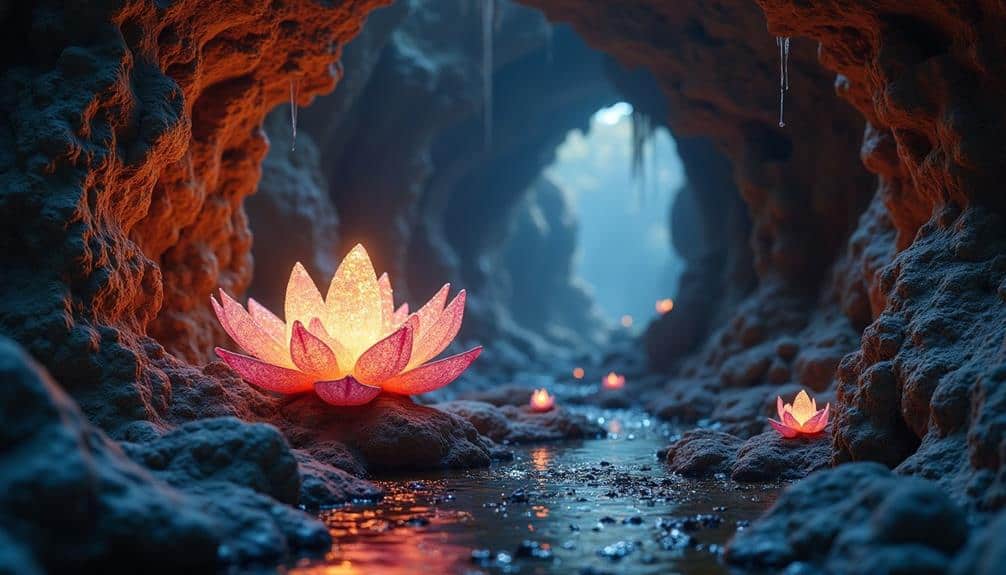
Danila’s relentless pursuit of the perfect stone flower isn’t just a demonstration of his skill but also a journey into the enigmatic heart of Ural folklore. This elusive flower, rooted in the mystical origins of the region, symbolizes more than just a masterful creation. It embodies the magical essence of the Ural Mountains, where legends speak of hidden treasures and otherworldly beauty.
As you explore the story, you’ll find that the stone flower’s allure isn’t solely in its physical form but in the profound mysteries it represents.
Every artistic interpretation of the stone flower captures a different facet of this enigmatic symbol. Sculptors and storytellers alike have tried to encapsulate its ethereal beauty and the deep secrets it holds. The stone flower’s depiction varies, often reflecting the artist’s own vision and understanding of its mystical origins.
For Danila, the stone flower becomes a lifelong obsession, driving him to explore the boundaries of his craft and the depths of his soul.
Understanding the stone flower means appreciating its dual nature—a tangible masterpiece born from the hands of a skilled craftsman and an intangible legend woven into the fabric of Ural folklore.
Danila’s Journey
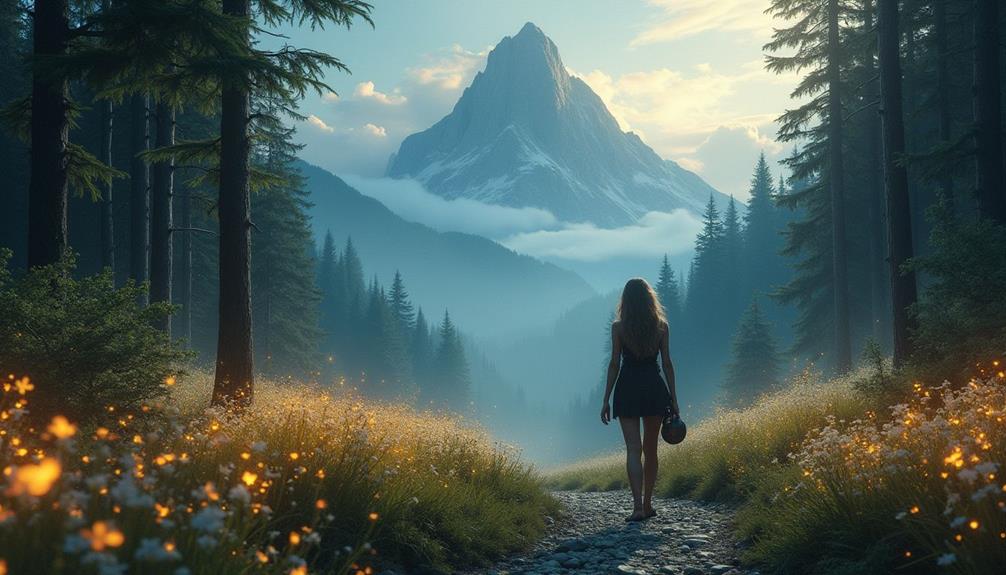
Beginning his quest for the stone flower, Danila leaves behind the familiar comforts of his village and steps into the vast, untamed wilderness of the Ural Mountains. You can almost feel the weight of his decision as he ventures into the unknown, driven by Danila’s determination to find the legendary blossom. Each step he takes echoes his unwavering resolve, fueled by stories of the stone flower’s unparalleled beauty and power.
Traversing rugged terrain, you notice his resilience shining through. He faces harsh weather, treacherous paths, and the ever-present threat of wild animals. Yet, Danila isn’t easily deterred. His determination acts as a guiding light, pushing him forward despite the obstacles in his way. He draws strength from the memory of his village, the people who believe in him, and the dream of mastering his craft.
Danila’s journey is a reflection of human spirit and perseverance. He navigates dense forests, crosses icy rivers, and scales rocky inclines, each challenge met with grit and courage. Through sleepless nights and exhausting days, Danila’s resilience becomes his greatest ally, propelling him closer to the stone flower and the destiny he seeks.
Magical Encounters
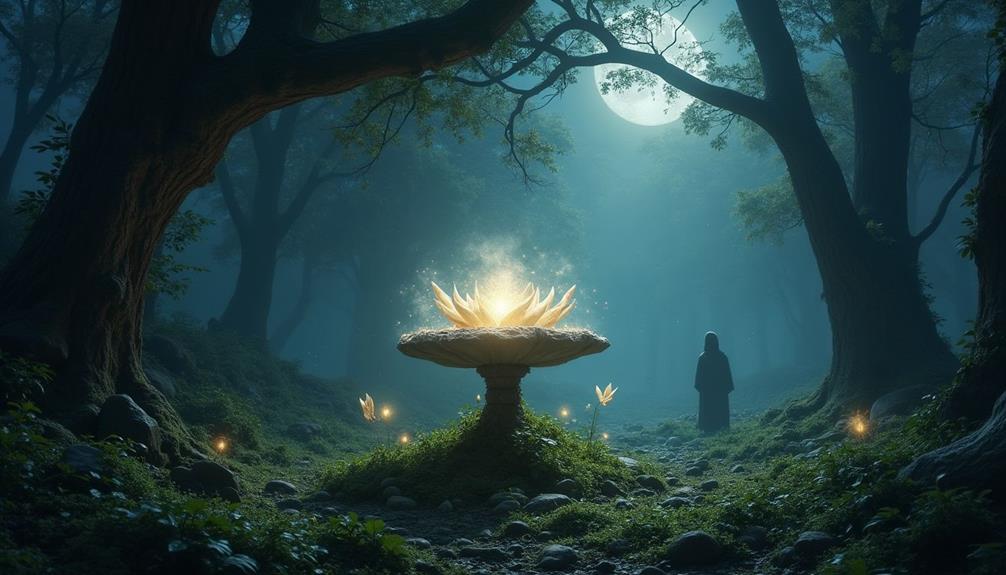
Mystique envelops Danila as he ventures deeper into the heart of the Ural Mountains, where the boundary between reality and enchantment blurs. You feel the air grow denser, filled with whispers of the ancient spirits that guard these lands.
The enchanting landscapes around you shimmer with an otherworldly glow, each step drawing you closer to the domain of magical realism.
As Danila navigates this mystical terrain, you can’t help but notice the subtle shifts in the environment. Trees seem to breathe, rocks pulse with hidden energy, and streams sparkle with an unnaturally vivid hue.
The flora and fauna appear almost sentient, guiding Danila forward on a path only he can see.
Suddenly, you encounter the Mistress of the Copper Mountain, a being as mesmerizing as the landscapes themselves. Her eyes, deep and knowing, reflect the secrets of the earth.
She offers Danila a glimpse into a world where nature and magic coexist, challenging him to create the elusive Stone Flower.
Each interaction with her feels like a dance between reality and fantasy, pulling you deeper into the story’s magical realism.
In these encounters, the line between human and supernatural fades, leaving you spellbound.
Themes and Symbolism
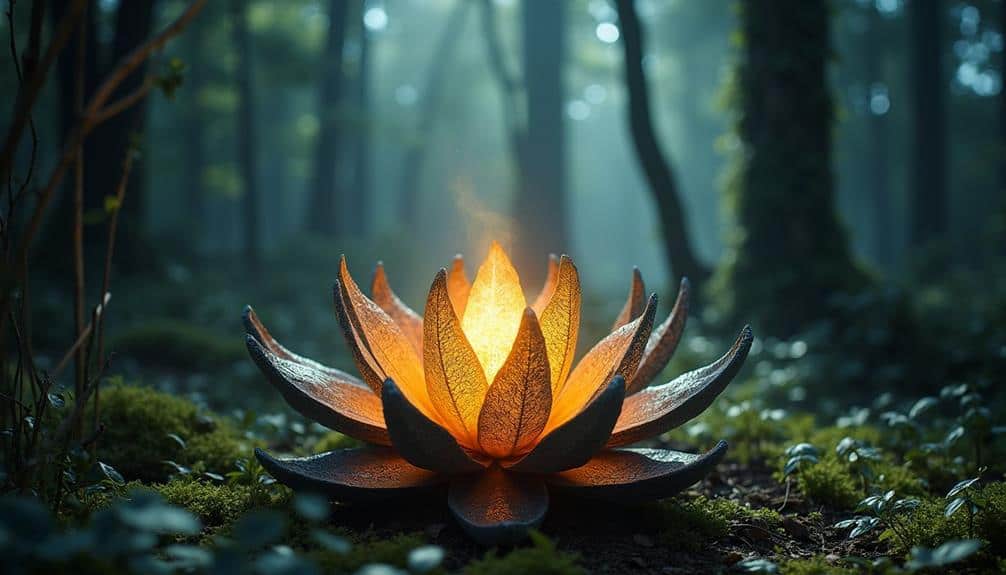
At the heart of “The Stone Flower,” themes of ambition, sacrifice, and the eternal struggle between materialism and artistry come to life.
You’ll see how the protagonist, Danila, grapples with his desire to create the perfect stone flower, a symbol of ultimate artistic achievement. His journey is marked by a series of choices that force him to weigh the value of artistic perfection against personal happiness and human connection.
Nature symbolism is woven throughout the narrative, highlighting the tension between the natural world and human ambition. The Mountain Mistress, representing nature’s mysterious and untamed power, offers Danila the chance to create a flawless masterpiece, but at a significant cost.
This underscores the theme of sacrifice, as Danila must decide what he’s willing to give up for his art.
Artistic interpretation also plays a vital role in the story. Danila’s relentless pursuit of perfection reflects the broader human quest for meaning and beauty.
The stone flower itself becomes a metaphor for the elusive ideal that artists endeavor to capture. Through Danila’s experiences, you’re prompted to reflect on the price of artistic obsession and the delicate balance between creation and destruction.
Cultural Impact
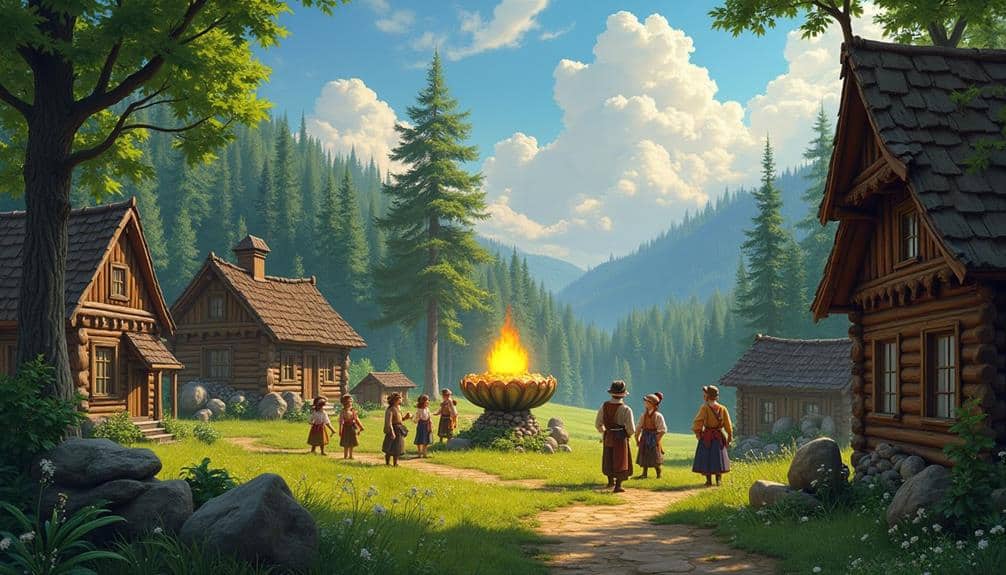
The Stone Flower” doesn’t just explore timeless themes; it also leaves a lasting mark on Russian culture. You can’t underestimate its cultural significance. Rooted in Ural folklore, it bridges the past and present, helping to preserve and celebrate Russian heritage.
This story has inspired countless artistic representations, from paintings and sculptures to theatrical performances and ballets. Artists across generations have found a deep well of inspiration in its rich narrative and vivid imagery.
When you visit Russian museums or galleries, you’ll likely encounter these artistic representations. They highlight the tale’s enchanting elements and profound messages. The narrative of “The Stone Flower” has even made its way into folk music, resonating with audiences through hauntingly beautiful melodies and lyrics that capture its essence.
Moreover, the story’s impact extends to education, where it’s often included in literature and history curricula. It helps students understand cultural values and the importance of folklore in shaping national identity.
Modern Adaptations
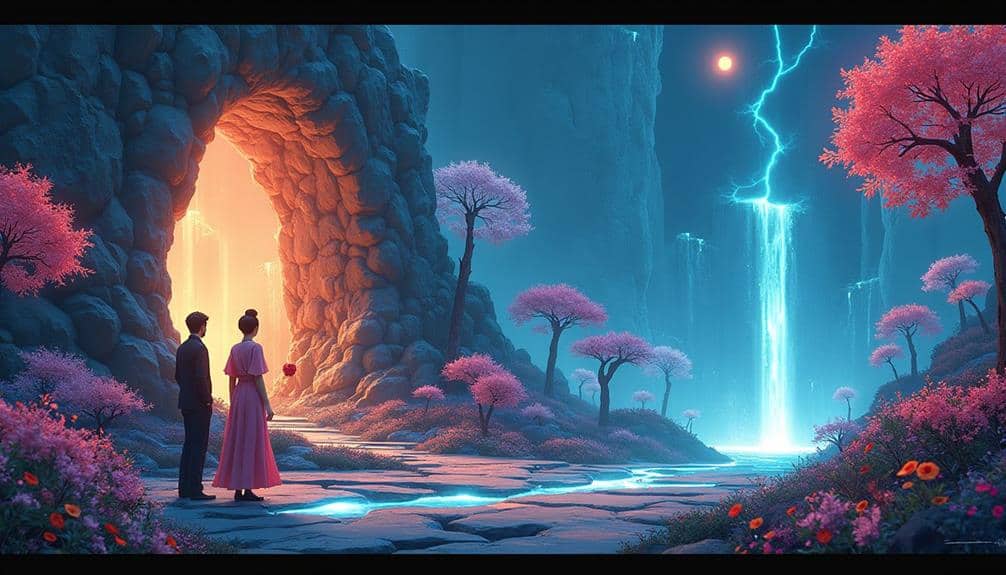
In today’s world, “The Stone Flower” continues to captivate audiences through modern adaptations that breathe new life into this timeless tale. Theatrical adaptations have been particularly successful in bringing the story’s rich cultural heritage to contemporary viewers.
You can find productions that blend traditional Russian folklore with innovative staging, lighting, and special effects. These performances not only honor the original narrative but also make it accessible to new generations.
Artistic interpretations of “The Stone Flower” have also flourished in various forms of media. Animated films and graphic novels reinterpret the story’s mystical elements with stunning visuals and compelling storytelling.
These modern renditions allow you to experience the tale in ways that are both visually and emotionally engaging. Additionally, digital platforms have made it easier than ever to access these artistic works, ensuring that the legend of “The Stone Flower” reaches a global audience.




